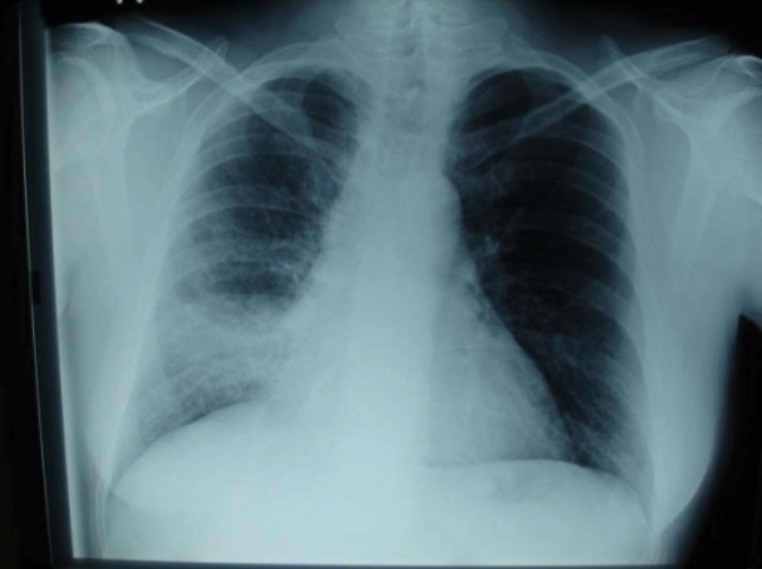Playlist
Show Playlist
Hide Playlist
Influenza A: Definition and Etiology
-
Slides InfluenzaA InfectiousDiseases.pdf
-
Reference List Infectious Diseases.pdf
-
Download Lecture Overview
00:01 In our discussion of respiratory tract infections, we turn now to the very important subject of influenza A. 00:11 Influenza A is a an orthomyxovirus virus and it’s the cause of an acute, febrile, respiratory illness which occurs in outbreaks of varying severity almost every winter in temperate climates and year-round in tropical climates. 00:28 And there’s a picture of what this culprit looks like. 00:35 As an orthomyxovirus, it’s a single-stranded RNA virus and there are three different types of influenza virus: A, B, and C. 00:48 It causes more severe and widespread disease than almost any other viral infection. 00:56 And the key parts of the influenza virus are those spikes that you see sticking out. 01:04 One of them, if you notice, is named HA-hemagglutinin. 01:11 The other is neuraminidase. 01:15 Those are the two key spikes that allow the virus to get into a respiratory cell and make more copies of itself, and the new copies have to emerge because of the second spike, more about that shortly. 01:37 The history of influenza is tragically fascinating and first came to world attention in World War I with the so-called Spanish flu of 1918. 01:54 Twenty to forty percent of the world population became ill with 50 million deaths worldwide, 675,000 in the U.S. alone. 02:06 The soldiers were absolutely decimated by the Spanish flu. 02:14 The Asian flu was the next, but shrunk in proportion compared to the Spanish flu. 02:24 There were one to two million deaths worldwide, more than 3,500 deaths in the U.K., and about 70,000 deaths in the United States. 02:35 Now, most of these deaths are due to the complications of the flu. 02:42 And remember that we had no antibiotics in 1918 and we had a relative few antibiotics in 1957. 02:55 The Hong Kong flu of 1968 accounted for a million deaths worldwide, 33,000 in the United States. 03:05 And we were all concerned about the return of the Spanish flu, which was a similar virus in 1976 and many people were immunized, but it never caused a pandemic that was expected. 03:18 There was another pandemic of H1N1 influenza in 2009 with 480,000 cases worldwide with 6,000 deaths, much lower than the others. 03:36 Let’s talk about the naming of influenza viruses. 03:41 There’s lots of variability about these spikes, for example, the hemagglutinin spikes there are 16 antigenic types, and the neuraminidase spikes there are 9 antigenic types. 03:54 And the viruses can change and mix and match these types and some of us have immunity to some types but not to others. 04:06 The formal name for an influenza virus, first of all, if it’s influenza A that’s listed first, and then the first place that it was isolated and the date it was first isolated. 04:23 So that would be A/Puerto Rico/8/34. 04:31 More commonly, we refer to the viruses at just by their antigenic types, like A/H1N1 or A/H3N2.
About the Lecture
The lecture Influenza A: Definition and Etiology by John Fisher, MD is from the course Upper Respiratory Infections.
Included Quiz Questions
What is the genetic molecular structure of the Influenza virus?
- Single-stranded RNA virus
- Double-stranded RNA virus
- Single-stranded DNA virus
- Double-stranded DNA virus
What structure(s) of the influenza orthomyxovirus allows it to ingress and egress from target respiratory cells?
- HA hemagglutinin and NA neuraminidase surface glycoproteins
- The helical nucleocapsid structure
- The lipid bilayer membrane
- The M2 protein
- The intracellular glycoproteins M and N
What gives the influenza virus it's variability every year?
- The various combinations of the 16 different HA hemagglutinin antigenic types and 9 different NA neuraminidase antigenic types.
- The various molecular structure of the viral RNA, e.g helical nucleocapsid versus circular plasmid.
- The various surface lipoproteins.
- The various antigenic types of the M2 protein.
- Whether it is a double stranded RNA virus versus and single stranded retrovirus.
Customer reviews
5,0 of 5 stars
| 5 Stars |
|
5 |
| 4 Stars |
|
0 |
| 3 Stars |
|
0 |
| 2 Stars |
|
0 |
| 1 Star |
|
0 |





